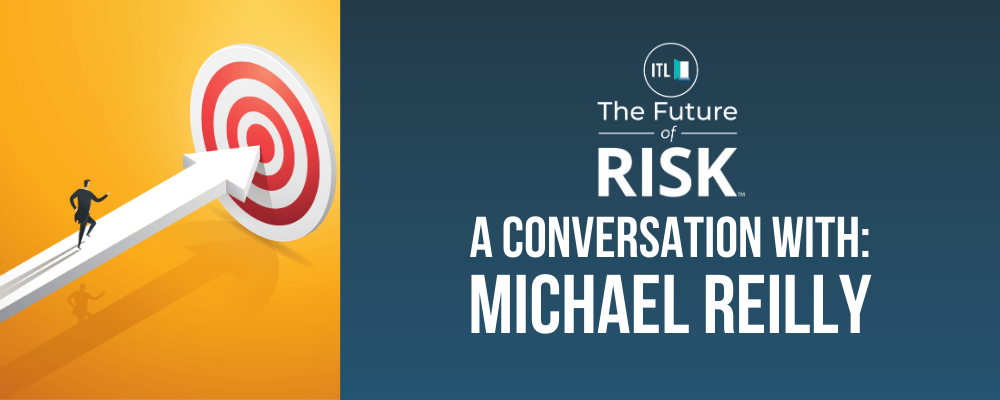 |
Patrick Schmid, PhD, MA, is president of The Institutes RiskStream Collaborative. He previously headed The Institutes’ Enterprise Research Department; served as director of research for the Insurance Research Council (IRC), a division of The Institutes; and worked as an economist for Moody’s Analytics. Schmid has taught economics and finance at Philadelphia colleges and universities. |
Paul Carroll
The last time we talked, you had a couple of use cases, in particular, that were moving along well. To set the stage, would you tell us what the state of play is now.
Pat Schmid
It's been interesting. The consortium has done a very good job of developing an efficient platform, which we call Canopy. This was critical to ensure that costs are reasonable to build and adopt various solutions, which would be done on top of Canopy. Over the past couple of years, we’ve developed the platform to the point where we can build and move forward with a variety of different use cases and a variety of different use case types.
In the past, when we've chatted, we've primarily focused on network-based use cases like Rapid X, the loss data exchange solution for auto insurers. With that application, for small or medium-sized organizations to get the large benefits associated with it, the largest carriers would likely need to be on the network. This, at times, created a kind of chicken-and-egg problem for the consortium, because a similar notion also affects the large players. The benefit of being on the network is based on others joining in, too.
To obtain strategic advice and tackle that challenge, we formed an auto insurance advisory committee that consists of representatives from eight out of the top 10 auto insurance companies. Many of these companies have signed a letter of intent to adopt RAPID X and were, therefore, committed to expanding the network. We are now planning to pilot the Rapid X solution with three companies in the fall; all three are top-15 auto insurance companies. We're keeping the pilot, which will leverage production data, small to move more quickly. We’re very excited because this advisory group has helped us understand that the value of RAPID X may be leveraged in other ways, like displacing various companies’ third-party claims portals. This may make the value to a carrier less dependent on the network adoption of other carriers, which could overcome the chicken-or-egg problem.
We've also been recognizing that what we’re calling linear use cases or partnership use cases can emerge and take off quickly. We recently started a working group that was looking into whether there might be a use case for a parametric trigger using smart contracts on a blockchain for homeowners’ parametric reinsurance. Basically, could the cedant-to-reinsurer parametric contract be automated with blockchain-enabled smart contracts?
As we did that, we were introduced to a technology company called Arbol, which had a contract they were working on with a Florida-based insurance company called Centauri, and they actually leveraged a parametric product during Hurricane Ian and had a $10 million payout. They were looking to automate and put the product on a blockchain platform, so we talked to them about Canopy, and within months this application was built and moved to production. This app is live on Canopy. It actually just won the Insurer Insider Honours “Underwriting Innovation of the Year” award, and RiskStream/Arbol held a summit to start to think about other uses of the application.
Whether it’s the network-based apps or linear/partnership apps, I think we're beginning to see a lot of light at the end of the tunnel within enterprise blockchain use cases in insurance. I think there will be
applications here over the next year or so that will be live and will provide significant operational efficiencies to the industry.
Paul Carroll
For those who aren’t familiar with Rapid X, could you say a bit about how it works and what its benefits are?
Pat Schmid
Sure. It's an auto insurance data exchange solution that allows a carrier’s claims system to exchange information and data, automatically and securely, with another carrier’s claims system. This is done today in less secure ways. To give an example: Let’s say a policyholder with Liberty Mutual calls in with a loss. Liberty will record the first notice of loss within their (let’s say Guidewire) claim system. That Guidewire system can integrate Liberty’s claims system to their Canopy node on our decentralized network of nodes for insurance carriers. Let's say the Liberty Mutual policyholder was in an accident with someone from Allstate. The data from Liberty Mutual’s claims system can be sent from the Liberty node over to the Allstate node in a permissioned and private manner. This node can integrate into Allstate’s claims system, which could be Guidewire, Duck Creek or some other, homegrown claim system. So, by the time the Allstate policyholder calls in, Allstate may already have information on the claim, which will expedite the process on the phone and make for a better customer experience. Our solution also lets their nodes exchange information as they fill in data in their individual claims systems, reducing the back-and-forth between the two companies as they determine liability and so on.
We’re not recording the data on the blockchain itself, by design. The blockchain is simply a state machine for network participants. It’s allowing the system’s state to update and providing access between those two parties to exchange information privately and much more securely than they do today.
On top of this foundation, we’ve started to add capabilities. One that's really interesting was brought to us independently by two top-five personal auto insurers. Most of the top insurance companies in personal auto have third-party portals that can provide data to other companies, so employees don’t have to handle lots of calls. The challenge is advertising to their competitors whether they have a third-party claims portal and where to go. There’s really no benefit for a company maintaining their own third-party portal. So these two companies suggested creating an industry “universal portal” so even small companies that don’t have a third-party portal and that aren’t on the Rapid X network can use it and help make the whole industry more efficient. This will likely leverage RAPID X as a back end and allow RAPID X participants to engage (with a much smaller data set) with those not yet on the network.
We’re also looking into adding an auto insurance fraud detection solution. While RiskStream is known for blockchain, our sweet spot is where multiple parties are involved in an issue. We can use any appropriate technology to solve those multiparty business process challenges. For detecting fraud from double-dipping, enterprise blockchain may not be the best tool because generally you need to pool the data to detect it. The industry is, for good reason, concerned about pooling data because of security and privacy issues. But technology can let the industry pool data confidentially (using what’s known as confidential computing).
Imagine this confidential computing platform to be a black box that no one owns, including RiskStream. No one can get the data from within it. But it's part of the RAPID X network, and Rapid X can start to feed it (with tiny bits of private, secure information) after each exchange between two RAPID X users. To continue with the example I used before, when Liberty Mutual and Allstate resolve that claim using Rapid X, it feeds a little bit of data into this confidential computing platform. Then, imagine CSAA comes to the table with a claim with Nationwide later. They can query the confidential computing platform to see, for instance, if that exact VIN has been involved in another incident with another insurer on the network recently. None of the parties will have access to the data, but they can query it to obtain a warning of double-dipping fraud.
Paul Carroll
I can imagine all kinds of benefits. Is there any way to quantify them in terms of time saved? Money saved? Something else?
Pat Schmid
We conducted a study on this, but at that time it was based on various assumptions. With the pilot, we’ll be using production data, so we’ll have real information on the ROI in a couple of months.
Paul Carroll
What did you find in the earlier analysis? I know it's not as complete as the pilot will be.
Pat Schmid
Our previous report on Rapid X ranged between $62 million and $173 million in savings industrywide.
In the Liberty Mutual/Allstate example I was sharing before, the first benefit would be that Allstate would reduce the amount of time needed to transmit information from the policyholder to their system of record. The second benefit is that the effort exerted in data exchange would be reduced. In our working group, among a large number of carriers, we were shocked to learn that the average claim requires five points of contact back and forth. These are all manual, normally conducted by phone or electronic communication, then often keyed into the respective claims system. That’s very inefficient and may not be maximizing privacy and security. The third benefit is the reduced reliance on external vendors that charge carriers for the data used in claims prefill. The fourth benefit is that Rapid X has a simple liability feature that allows carriers to notify one another when liability is determined in certain cases. Finally, there is a reduction in overall cycle time, which will lead to a better customer experience on both sides.
Our members think there's vast potential here and see possibilities for extension to a suite of surrounding products, including fraud detection, broader liability determination, subrogation and salvage. The big question is: Can The Institutes and RiskStream get the industry participants to work together? We're showing through our advisory groups, our pilots and our working groups that we can, and that has been a challenge for other enterprise blockchain initiatives. That's the big step. Once companies start to move to production, we think we will cross the chasm, so to speak. This will lead to a snowball effect. So we're close, but we have a little more work to do.
Paul Carroll
You have an awful lot of the big players, and the small players tend to follow the big players. And correct me if I’m wrong, but I don’t see any competitive reason for companies not to work together on Rapid X. There might be logistical issues, but I don’t see a business reason not to do it.
Pat Schmid
I agree. And the nice thing for a lot of these larger insurers is that they're operating across different lines of insurance, and we have other solutions that can be beneficial to them in other areas. We have use cases in surety bonds, for example. We're also going to be starting up a working group in commercial property and recently launched a lab in inland marine. We have several use cases in the life and annuities market. So, industry players like Nationwide or Cincinnati Financial, for example, that operate in all of the above, have benefits in supporting our initiative because theoretically they're going to want these efficiency gains for surety bonds, but they’re also going to want it for commercial property, and they're going to want it for life and annuities.
On that note, surety is actually our largest initiative, by far. It's global in scope. We've been working with five international surety associations: the International Credit Insurance & Surety Association (ICISA), the Canadian Surety Association, the National Association of Surety Bond Producers, the Surety & Fidelity Association of America and the Panamerican Surety Association. At the outset, these entities supported the effort to create a surety network. Since then, we’ve worked with the industry on two use cases. The surety industry is riddled with complexity and paper because of all the disparate parties: You have the obligee, the surety, the agent, the principal, all involved in verification. So there’s a variety of parties involved in a manual, paper-based process that could be digitized. Thus far, we’ve created an application for a power of attorney document that is created as an NFT [non-fungible token] and digitally verified across the various parties. Since then, we've more moved to the bond itself, again creating an NFT to track delivery and verification.
Now we’re working with large core system providers such as BondPro, Surety2000, Tinubu and Xenex to integrate various systems to the nodes. This will help as we’re now moving to engage obligees. The work has received a lot of attention in the surety space. I wouldn’t have predicted that sector would be so supportive of technology solutions, but enterprise blockchain has been of deep interest to them. I think the key reason is multiparty business process challenges. That’s the sweet spot for enterprise blockchain.
Paul Carroll
If we talk in a year or two, what do you think will be the headlines for blockchain? It sounds like Rapid X is a big one. Surety bonds would be a big one. What else?
Pat Schmid
I see Rapid X moving to production and starting to provide business benefit. Those additional features will likely start to be leveraged, as well – the fraud detection and universal portal, for example. Others may, too, such as assistance with subrogation and increased efficiency in the title transfer process in salvage.
I do think the surety bonds initiative will move to production here over the next year to year and a half in power of attorney verification and bond delivery/verification and probably start to move forward in some other areas, as well.
We'll start to see progress in other sectors, especially life and annuities. The lead there is what we are calling the Mortality Monitor, which allows network participants to securely and privately share certain data on a deceased party in a permissioned manner, provided another network participant also has the deceased as a policyholder. If the industry can find ways for the carrier to learn of the death quicker, the beneficiary reward process is also going to be expedited, which is going to benefit everyone.
I think payments is also ripe for change. As you’ve seen with the use cases I’ve mentioned, a lot of focus has been on data exchange and verification within claims and underwriting, but it’s likely payments use cases will come to light in the next few years. I think these will move very quickly when the time is right.
Finally, I anticipate that insurtechs with innovative solutions will get involved and that partnership use cases can move very quickly, as Arbol did. We have the technology platform today, and we have the business network of all these large carriers, brokers and reinsurers, so if you bring a good idea to the table it can move really quickly to production and provide business benefit.
Paul Carroll
The whole effort sounds so much more robust than when we talked last. Is there anything else you want to highlight that I haven't thought to ask about?
Pat Schmid
The only other thing I’d mention is RiskStream is here to help the industry on multiparty business processes. While enterprise blockchain has been and will remain our focus, a lot of attention has recently been on AI, and our members have asked about multiparty usages of this technology and whether RiskStream could potentially work on related solutions. Again, our focus is enterprise blockchain, but if the industry has an example where there’s a multiparty use of AI, there may be an opportunity RiskStream could look into. To better understand this, RiskStream is preparing an educational series on multiparty AI usage in insurance in the winter. Stay tuned for more on that.
Paul Carroll
This was great, Pat, as always. Thanks.








